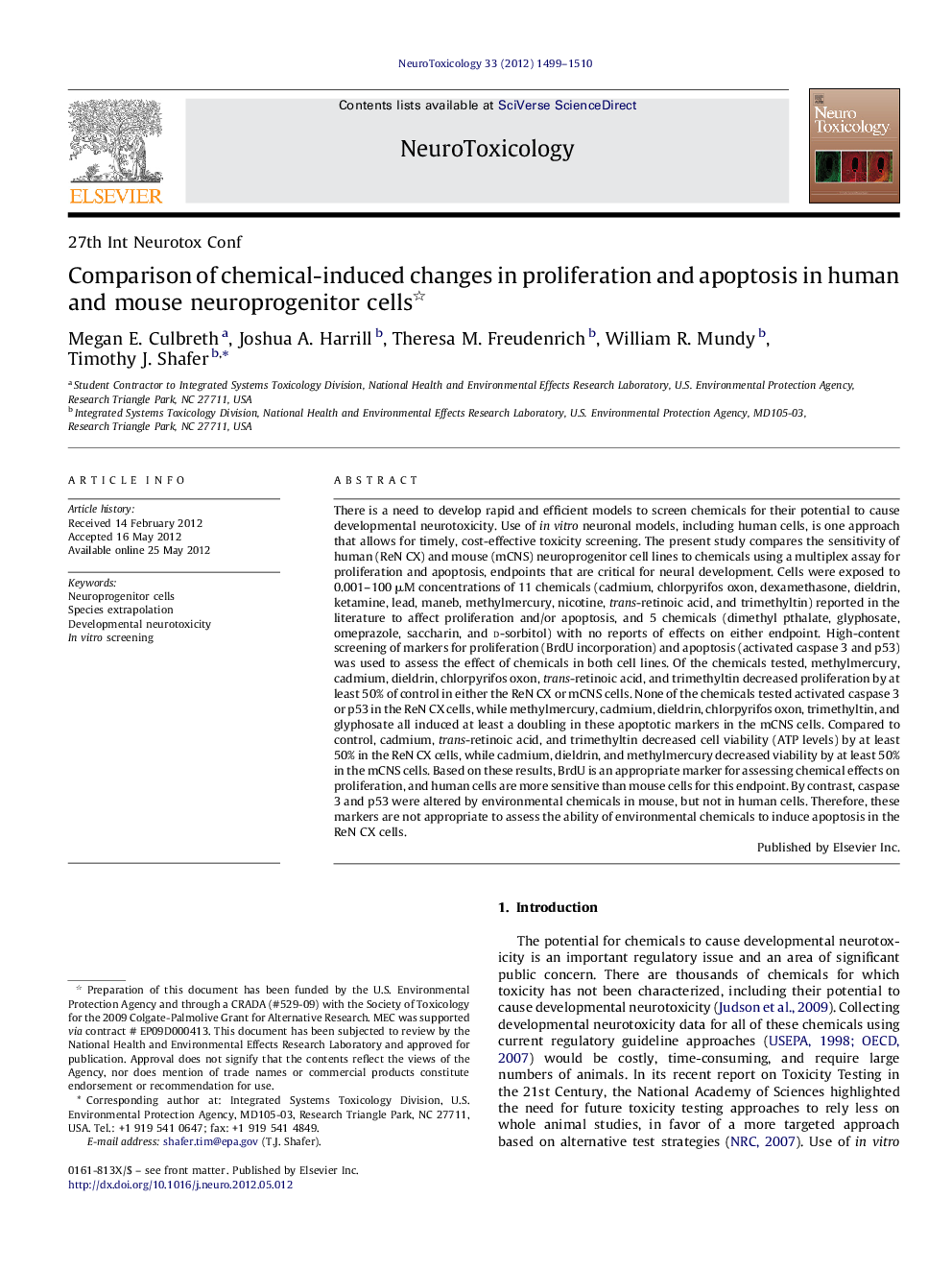| Article ID | Journal | Published Year | Pages | File Type |
|---|---|---|---|---|
| 2589913 | NeuroToxicology | 2012 | 12 Pages |
There is a need to develop rapid and efficient models to screen chemicals for their potential to cause developmental neurotoxicity. Use of in vitro neuronal models, including human cells, is one approach that allows for timely, cost-effective toxicity screening. The present study compares the sensitivity of human (ReN CX) and mouse (mCNS) neuroprogenitor cell lines to chemicals using a multiplex assay for proliferation and apoptosis, endpoints that are critical for neural development. Cells were exposed to 0.001–100 μM concentrations of 11 chemicals (cadmium, chlorpyrifos oxon, dexamethasone, dieldrin, ketamine, lead, maneb, methylmercury, nicotine, trans-retinoic acid, and trimethyltin) reported in the literature to affect proliferation and/or apoptosis, and 5 chemicals (dimethyl pthalate, glyphosate, omeprazole, saccharin, and d-sorbitol) with no reports of effects on either endpoint. High-content screening of markers for proliferation (BrdU incorporation) and apoptosis (activated caspase 3 and p53) was used to assess the effect of chemicals in both cell lines. Of the chemicals tested, methylmercury, cadmium, dieldrin, chlorpyrifos oxon, trans-retinoic acid, and trimethyltin decreased proliferation by at least 50% of control in either the ReN CX or mCNS cells. None of the chemicals tested activated caspase 3 or p53 in the ReN CX cells, while methylmercury, cadmium, dieldrin, chlorpyrifos oxon, trimethyltin, and glyphosate all induced at least a doubling in these apoptotic markers in the mCNS cells. Compared to control, cadmium, trans-retinoic acid, and trimethyltin decreased cell viability (ATP levels) by at least 50% in the ReN CX cells, while cadmium, dieldrin, and methylmercury decreased viability by at least 50% in the mCNS cells. Based on these results, BrdU is an appropriate marker for assessing chemical effects on proliferation, and human cells are more sensitive than mouse cells for this endpoint. By contrast, caspase 3 and p53 were altered by environmental chemicals in mouse, but not in human cells. Therefore, these markers are not appropriate to assess the ability of environmental chemicals to induce apoptosis in the ReN CX cells.
► High-throughput assays were developed to measure proliferation and apoptosis in human and mouse cortical neuroprogenitor cells using high-content imaging. ► Effects on proliferation and apoptosis were assessed in each cell type using 11 environmental and 5 negative control chemicals. ► Human neuroprogenitor cells were more sensitive to effects on proliferation than mouse neuroprogenitor cells. ► Human neuroprogenitor cells were insensitive to effects of environmental chemicals on apoptosis, thus mouse neuroprogenitor cells were more sensitive than human cells to chemical effects on this endpoint.
